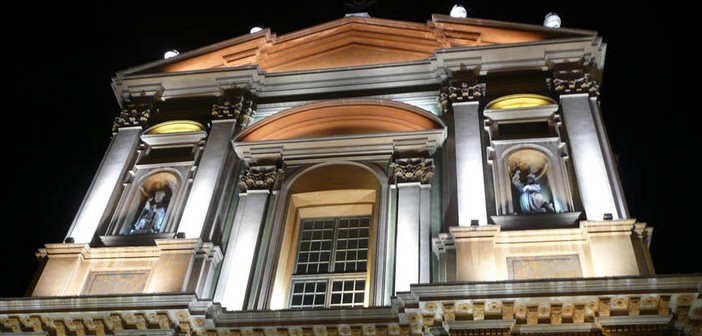Until 466, there were two bishoprics in Nice, the first in Cimiez and the second at the Château. They were then united into a single seat: Cimiez.
After the fall of the Western Roman Empire, Cimiez was gradually abandoned, and the episcopal seat, located on the Château hill, became the bishopric of Nice. Several structures succeeded and intertwined. The first paleochristian cathedral dates from the 5th century. During the Carolingian era, an apse was added.
In the 11th century, after the fears of the year 1000 had subsided, the medieval Romanesque-style cathedral was erected. It comprised three naves. The high altar was consecrated in 1049. The chapter of canons met a century later. In the 15th century, a second cathedral was built. It became the church of the Château in 1590 when the episcopal seat was transferred to the lower city at the Sainte Réparate Priory.
It was destroyed by the explosion of the powder magazine on March 28, 1691, during Catinat’s attack on Nice’s citadel. Returning to the 11th century, in 1078, Raimbald Rostagni brought the relics of Saint Réparate from Rome. He erected an oratory at the foot of this Château hill. According to the cartulary, it later became a priory attributed to the Abbey of Saint Pons. A church was built at the beginning of the 13th century and became a parish in 1246.
In 1531, the Abbey of Saint Pons exchanged the church of Sainte Réparate for that of Saint James the Greater, or Saint Giaume, better known for its chapel dedicated to Saint Rita. The reasons for transferring the episcopal seat to the lower city are explained by Nice’s development outside its citadel and also by the difficulty for the faithful to access a church enclosed within ramparts.
Sainte Réparate quickly proved to be too cramped. In 1649, the erection of a larger cathedral was undertaken. An accident in 1628, the collapse of the vault, which killed Bishop Monsignor Palletis, delayed the work. It resumed only five years later in 1673 to be completed in 1682. The cathedral was consecrated on May 30, 1699. The bell tower was completed in 1767.
Place Rossetti was developed according to the Consiglio d’Ornato’s plan in 1815. The facade dates from 1830. In 1899, Bishop Chapon made new modifications in the choir and added an apse to each side nave between 1900 and 1903.
The first Sainte Réparate church was oriented along a south-north axis. The cathedral follows an east-west axis, with the high altar facing west. Sainte Réparate was restored at the beginning of the 21st century.
Thierry Jan


